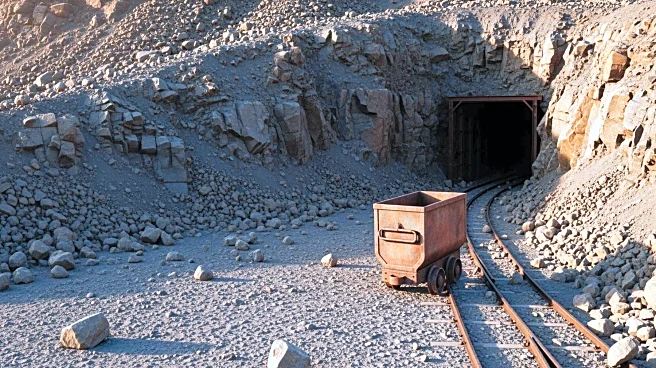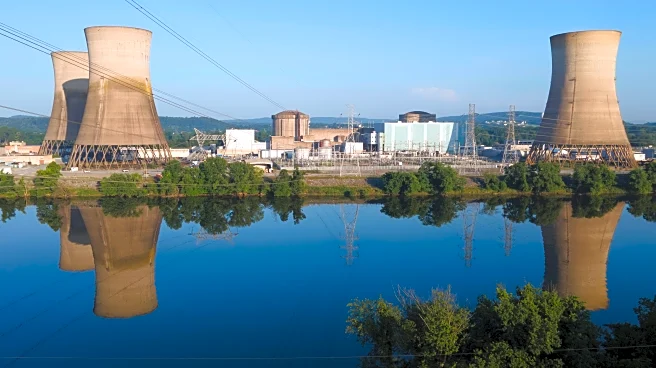What's Happening?
Anfield Energy has applied for state approval to restart its JD-8 uranium and vanadium mine in Colorado. The mine has been inactive due to unfavorable market conditions. The application is part of a broader
effort by the Trump administration to enhance U.S. energy security by reducing reliance on imported uranium and revitalizing the nuclear sector. Federal support for restarting reactors and accelerating permits for new uranium projects has increased, driven by rising power demand linked to AI-related data centers and other infrastructure. Anfield's CEO, Corey Dias, emphasized the importance of this permitting milestone in restoring U.S. uranium production capacity. The JD-8 site is supported by the Shootaring Canyon Mill, one of only three licensed conventional uranium mills in the U.S.
Why It's Important?
The move to restart the JD-8 mine is significant for U.S. energy security, as it aligns with the Trump administration's strategy to reduce dependency on foreign uranium. This initiative is crucial for bolstering the domestic nuclear sector, which is increasingly important due to rising energy demands. The restart of the mine could contribute to the U.S. fuel cycle, providing high-grade uranium for domestic use. Additionally, the federal government's support for nuclear energy projects reflects a commitment to diversifying energy sources and enhancing infrastructure resilience. This development could benefit U.S. industries reliant on nuclear energy and potentially create jobs in the mining sector.
What's Next?
Anfield Energy is poised to restart production in the second half of 2026, contingent on receiving state approval. The Trump administration's continued support for nuclear energy projects suggests further federal backing for similar initiatives. Stakeholders, including energy companies and local communities, may anticipate economic benefits from increased uranium production. The administration's recent $1-billion loan to Constellation Energy to restart a nuclear reactor in Pennsylvania indicates ongoing federal investment in nuclear infrastructure, which could influence future energy policies and industry dynamics.















